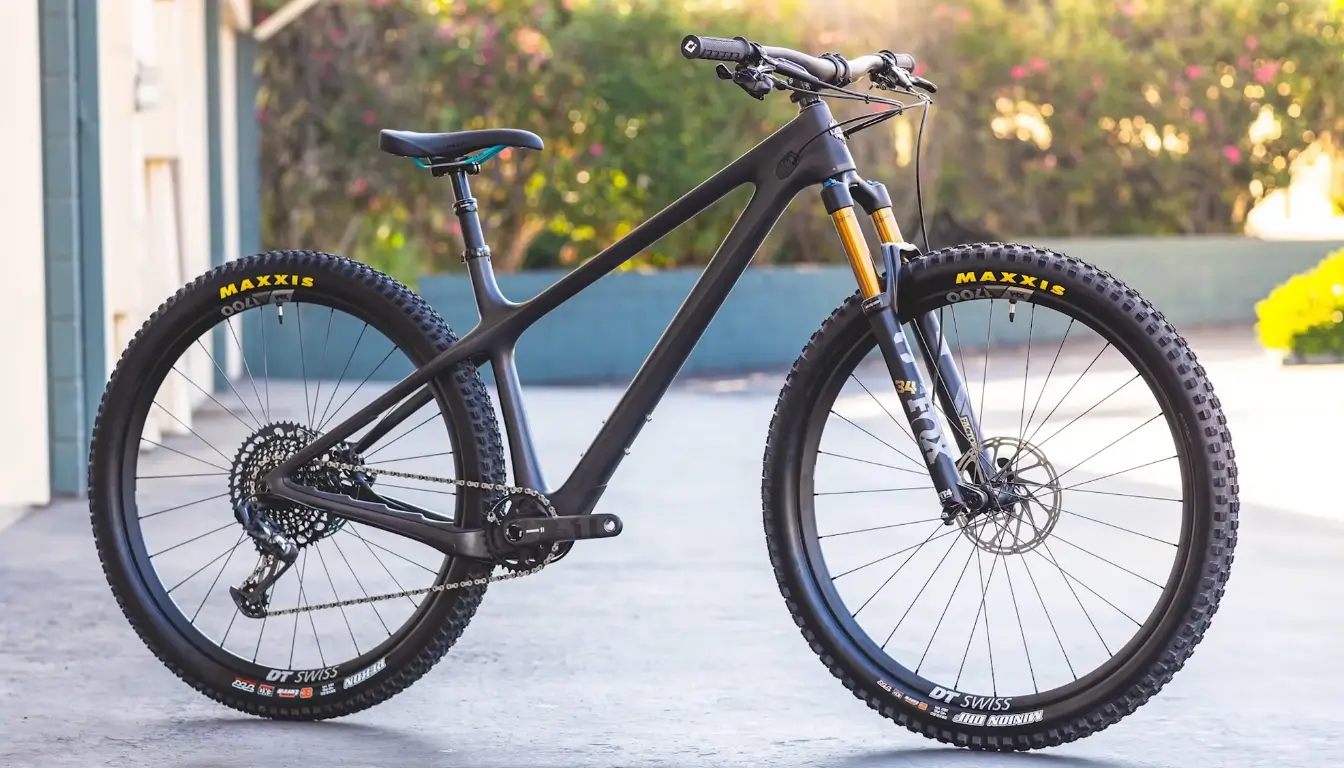Yes, tire size matters on the mountain bike. Mountain bikes are designed to be used off-road, but they also need tires that will not blow out when riding downhill at high speeds.
There are three mountain bike tires; knobby, semi-knobby, and slick. A knobby tire comprises small bumps that help increase grip and control. Semi-knobby is a compromise between knobby and smooth tires. Because it has some spots but also has a smoother tread surface. Slick tires have no bumps and are very slippery.
In this Article, You’ll Learn about the importance of Tire size, particularly in a Mountain Bike.
Mountain Bike Tire Size
Tire widths typically fall between 1.9″ and 2.25″ on a cross-country bike.
Tires for trail bikes and all-mountain bikes typically measure between 2.25 and 2.4 inches in diameter.
In order to withstand the rough terrain of drops and rock gardens, downhill bikes have tires that can be as wide as 2.5 inches.
The wide tires on fat-tire bikes allow them to be ridden on trails year-round.
Why does wheel size matter on a mountain bike?
Size does matter, at least in mountain riding, despite what you may have been told your whole life.The resistance you encounter while rolling on the trails is proportional to the diameter of your wheels. So if your wheelbase is large enough, you’ll be able to take on more challenging terrain.
Let’s pretend you’re pedaling along on a 26-inch bike, and you come upon a log in the path. You’ll have to ride a steeper angle through the log because it will meet your bike at a higher place on the wheel than on a 27.5 or 29-inch bike. Keeping control, stability, and forward momentum on the bike becomes more challenging as more force rebounds against the wheel.
Acceleration
While the 29er is more efficient over long distances, the 27.5-in. wheels are better for quick acceleration.
When accelerating, smaller wheels outperform larger ones. The primary reason for this is the wheel’s uneven distribution of mass. A giant wheel design results in higher rotational mass and reduced acceleration. This shifts the mass of the spokes, rims, tubes, and tires further from the wheel’s center. As a result, rolling items can move more quickly and with less effort by reducing their rotational mass.
When comparing a 27.5″ wheel to a 29″ wheel, one of the most frequently mentioned advantages is the 27.5″ wheel’s faster acceleration. Faster-accelerating wheels provide a bicycle with a more lively, responsive sensation.
Slower-accelerating wheels take longer to get up to speed, which may leave the bike unresponsive. Once the larger wheels achieve their top speed, they are more efficient than the smaller ones. This is for longer trips because they take less work to maintain momentum.
Traction
29-inch wheels achieve greater traction due to their larger surface area.
Wheels of 27.5 inches: These wheels are great for most uses due to their high traction and durability. Elements like acceleration, weight, and fit may be more crucial in determining the wheel size you choose.
Due to their larger contact patch, 29-inch wheels may offer better traction on rocks and roots.
Rolling over obstacles
When a spherical wheel strikes a square surface, an acute angle, known as the attack angle, is created. Therefore, the revolution will have an easier time rolling over the obstacle if the slope is less steep.
Compared to 29-inch wheels, 27.5-inch wheels have more difficulty rolling over obstacles. But they are still quite capable. So give some thought to the terrain you’ll be riding on.
If you are doing largely flat riding, then 27. 5-inch wheels will do the trick.
The attack angle of 29-inch wheels is less steep than that of 27.5-inch wheels. This makes them more adept at navigating obstacles like logs, roots, and rocks. In addition, many cyclists report feeling more at ease on bikes with larger wheels.
Fitness
Larger 29-inch wheels have a more noticeable impact on a bike frame’s geometry than their 27.5-inch counterparts. As a result, finding a suitable 29er that suits a rider shorter than 5 feet and 6 inches can take time and effort. Ride around on both sizes of wheels.
Bikes with 29-inch wheels may feel more comfortable for riders taller than 6 feet tall. However, tall riders can also find a good fit on a bike with 27.5-inch wheels. It’s essential to figure out what you value most among speed, traction, attack angle, and weight.
What size tires are best for mountain bike

Since no tire is perfect in every way, you should prioritize the characteristics that matter most for your riding.
Tires that are lightweight and roll quickly are preferable for cross-country cycling since the climbing economy is more vital than traction or extra durability (look for smaller, more densely spaced lugs).
A tire built for various terrains is unnecessary for trail riding. You should aim for an average or better combination of traction, durability, and speed.
While climbing is part of all-mountain biking, the thrill is in the descents. You’ll want tires that hold their shape effectively in sharp corners and can absorb some of the shock of modest collisions (look for bigger side lugs).
You’ll be getting a ride to the top of the hill, so your tires for the downhill ride should be robust and determined to make the most of the ride’s gravity-powered excitement. Tires that can take a beating, stay put on landings, and scratch their way through curves are a need.
The Effects of Tire Tread on Handling and Speed
Knobs, often called lugs, on mountain bike tires come in a wide variety of shapes and sizes. Tires should be matched to riding styles by considering factors such as these and others.
Large, widely spaced lugs dig into the squishy, muddy ground, and the wide channels efficiently drain the filth.
Closely spaced, small lugs provide adequate grip with little rolling resistance (more speed).
The center lugs on a set of tires are often ramped (slanted backward), which reduces rolling resistance and increases speed.
Extra cornering traction is provided by the side lugs, which are often larger.
When leaning into a turn, the transition from the center lugs to the side lugs is less jarring, thanks to transition lugs, which are located between the two sets of lugs.
The sipes, or cuts, in the lugs, increase the traction the tires have on smooth, hard terrain.
Conclusion
In conclusion, tires aren’t just useful for rolling over obstacles and rough terrain; they’re also vital for ensuring that you stay upright and safe throughout your ride. When choosing which tire to use, keep safety first in mind. Look for a wide range of sizes to ensure that you can handle various conditions and terrains.
Once you’ve picked the right size, choose a quality pair of wheels from a reputable manufacturer. This will help ensure you have the right grip and traction without sacrificing too much speed along the trail.

